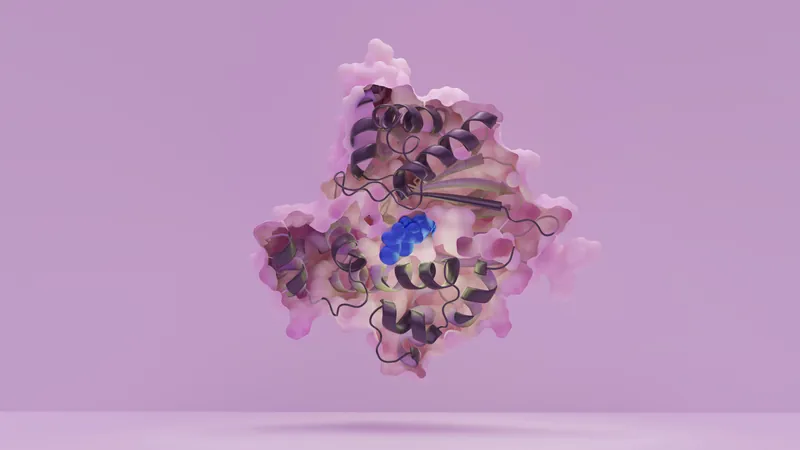
Breakthrough Pathoblocker Could Revolutionize Salmonella Treatment
2025-04-14
Author: Yu
New Hope Against Salmonella Infections
Salmonella, a notorious culprit behind severe gastrointestinal issues, often manifests when contaminated food is ingested, leading to inflammation and potential systemic infections. But now, scientists are turning the tide with a groundbreaking discovery.
A Game-Changer: The Synthetic Substance C26
A global research team led by Professor Samuel Wagner from the University of Tübingen has unveiled an innovative synthetic substance named C26. This game-changing compound intervenes early in the infection process by halting Salmonella's ability to inject harmful effector proteins into gastrointestinal cells. The potential for developing C26 into a therapeutic drug for both humans and animals is now on the horizon.
Combatting Antibiotic Resistance
As Salmonella strains evolve resistance to conventional antibiotics, the need for alternative treatments becomes increasingly critical. Pathoblockers like C26 offer a unique solution by targeting the bacteria before they can infiltrate bodily tissues, disrupting their infectious strategies without the risk of fostering antibiotic resistance.
Targeting the Vulnerable HilD Regulator
Central to this breakthrough is the identification of a key regulator called HilD, which plays a pivotal role in Salmonella's entry into host cells. The researchers discovered a 'druggable pocket' within HilD's structure, allowing C26 to bind precisely and disrupt its function.
Promising Laboratory Results
Through extensive screening of compound libraries, the team pinpointed C26 as a promising candidate. Subsequent tests confirmed its efficacy in thwarting bacterial pathogenicity, even when the bacteria are hiding within immune cells. This specificity not only targets the pathogens effectively but also preserves the beneficial human microbiome.
Path Towards Practical Applications
Professor Wagner acknowledges that the journey to harness C26 as a treatment for Salmonella infections is lengthy but vital. Beyond human health, these pathoblockers could also find a role in veterinary medicine, especially in poultry. Notably, unlike traditional antibiotics that compromise healthy gut bacteria, these new pathoblockers promise fewer adverse effects on the microbiome.
Conclusion: A Bright Future for Infection Control
This remarkable discovery underscores the importance of innovative basic research in identifying solutions to pressing medical issues. As our understanding deepens, the potential for pathoblockers like C26 to transform the landscape of infection treatment is indeed promising.

 Brasil (PT)
Brasil (PT)
 Canada (EN)
Canada (EN)
 Chile (ES)
Chile (ES)
 Česko (CS)
Česko (CS)
 대한민국 (KO)
대한민국 (KO)
 España (ES)
España (ES)
 France (FR)
France (FR)
 Hong Kong (EN)
Hong Kong (EN)
 Italia (IT)
Italia (IT)
 日本 (JA)
日本 (JA)
 Magyarország (HU)
Magyarország (HU)
 Norge (NO)
Norge (NO)
 Polska (PL)
Polska (PL)
 Schweiz (DE)
Schweiz (DE)
 Singapore (EN)
Singapore (EN)
 Sverige (SV)
Sverige (SV)
 Suomi (FI)
Suomi (FI)
 Türkiye (TR)
Türkiye (TR)
 الإمارات العربية المتحدة (AR)
الإمارات العربية المتحدة (AR)